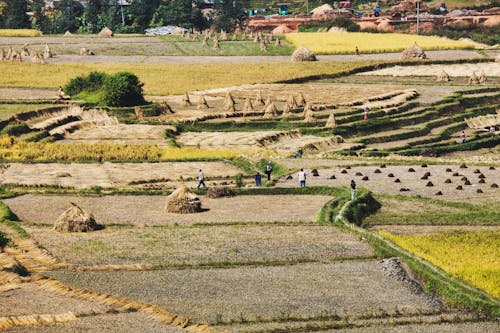Subsistence farming: When most people think about farming, they picture acres of land covered in crops and livestock.
But that’s not the only kind of farming out there. In fact, there are several different types of smaller-scale, specialty farms that may be a better fit for you if you want to work with a smaller piece of land or a more condensed operation.
That said, with the right tips and tricks, you can also make a smaller plot of land produce an abundant yield. Subsistence farming is the practice of growing just enough food to meet your family’s needs without having any excess to sell or give away. This type of farm is ideal for anyone who wants to live off their land as opposed to living off its income. Read on for some useful tips on getting started with this type of agrarian lifestyle.
When you change your thoughts, remember to also change your world. You can request publication of your article for publication by sending it to us via our Email below. Click here to start business now with businesshab.com
5 Tips for Subsistence Farming: A Guide to Easy Living

Subsistence farming is a way of life that has been practiced for centuries and continues to be relevant in the present day. It is a method of growing food with the intention of supplying most or all of one’s needs directly from the farm. Hence, subsistence farmers don’t sell their produce but rather use it as their primary source of nutrition. If you want to adopt this type of farming as well, keep reading and learn more about how you can do so successfully. Subsistence farming can be challenging for some people, but it doesn’t have to be difficult for you if you’re willing to put in the work. With the right tips and tricks, you can make your life as a subsistence farmer much easier.
Don’t forget to rotate your crops
Rotating crops is especially important when growing large quantities of food on a small-scale farm. Rotating crops is a way of controlling pests and disease. It is a very simple concept: If you plant the same crop in the same area every year, pests and diseases that affect that plant will build up over time and affect your harvest. If you switch to a different crop type every year, pests and diseases that affect that particular crop won’t have as much of an effect on your harvest. Simple, right?
Get to know your animals
If you are interested in raising livestock for food, you will need to get to know each animal very well. You should understand its particular needs and limitations, and be able to make an informed decision when choosing which animals to raise. Livestock require a fairly high level of commitment, but the amount of food that can be obtained from them is well worth the effort. Before deciding which type of animals to raise for food, you should first consider what you need and what you have space for.
Don’t waste anything!
While living a subsistence lifestyle, it’s important to make sure that you don’t waste any food or supplies. For example, if you grow your own produce, don’t throw out any seeds or rotten fruits; instead, use them to grow more crops! Don’t throw away any rotten wood, either; use it to build a new table or furniture item! Subsistence farming is all about making the most out of your resources. Don’t throw away anything that could be used as a material or even a source of food. If you buy any supplies, don’t throw away the packaging; reuse it for storage!
Be resourceful
This tip is connected to the previous one, but it’s important enough to be listed individually as well. Being resourceful is the key to success when living a subsistence lifestyle. If you’re ever in a situation where you need something but don’t have it, make it! You can use almost anything to make just about anything. If you don’t have any pots or other containers, use large leaves or pieces of bark to store your food or hold water. If you don’t have any sharp tools to cut something, use a rock or another blunt object! Being resourceful will help you save money, time, and effort, and will make your subsistence lifestyle much easier. If you ever find yourself in a situation where you have nothing with which to accomplish a task, stop and think about how you can turn something else into it. You might be surprised by what you can come up with!
Watch out for the elements
Subsistence farming involves working in nature, and this means you have to be extra careful about the elements. Make sure that you’re always aware of how the weather will affect your work. Don’t plant your crops too early in the year or they could freeze or be destroyed by bad weather, and don’t plant them too late or they’ll be eaten by insects and rodents. Keep an eye out for natural disasters, too. If you live in an area prone to flooding or wildfires, make sure you have a plan for what to do if disaster strikes. You don’t want to lose all your crops or animals because you weren’t prepared.
Summing up
Subsistence farming is a great way to feed yourself and your family while also connecting with nature. However, this lifestyle is not easy and requires a lot of hard work and dedication. When starting out, it’s best to start small with a few crops or animals that are easy to maintain and reproduce. Make sure to follow these 5 tips for subsistence farming and you’ll be well on your way.